By Claire de Carteret
Based in Sydney, Annette Bukovinsky works across clay, painting and drawing mediums to reflect upon human relationships with the natural world. Responding to the metaphysical implications of Cartesian dualisms, she considers the gross ecological disjunctures between living things found within Western capitalist cultural contexts. Recently the selected winner of Mixed Media in the Waverley Art Prize, and a finalist in the Northern Beaches Art and Design Prize and Sculpture in the Valley Prize, she continues the conversation about our environmental disconnection. Here, Annette shares the philosophical ideas that have informed her most recent work.
CLAIRE DE CARTERET: Hi Annette, how have you been? Firstly I wanted to ask, has lockdown altered your artistic process at all?
ANNETTE BUKOVINSKY: Thank you for the opportunity to communicate some of the ideas behind my practice. I’m really fortunate that my studio is located on our property so lockdown hasn’t really altered the physicality of my practice however, psychologically I’m beginning to see the weight of global devastation from this hideous virus creep into my work – some of the works seem a little more dystopian that usual.
DE CARTERET: You’re a multi-disciplinary artist working across ceramics, mixed media, painting and drawing. Can you talk me through the relationship you have with different mediums? Are they intertwined? Do they inform each other?
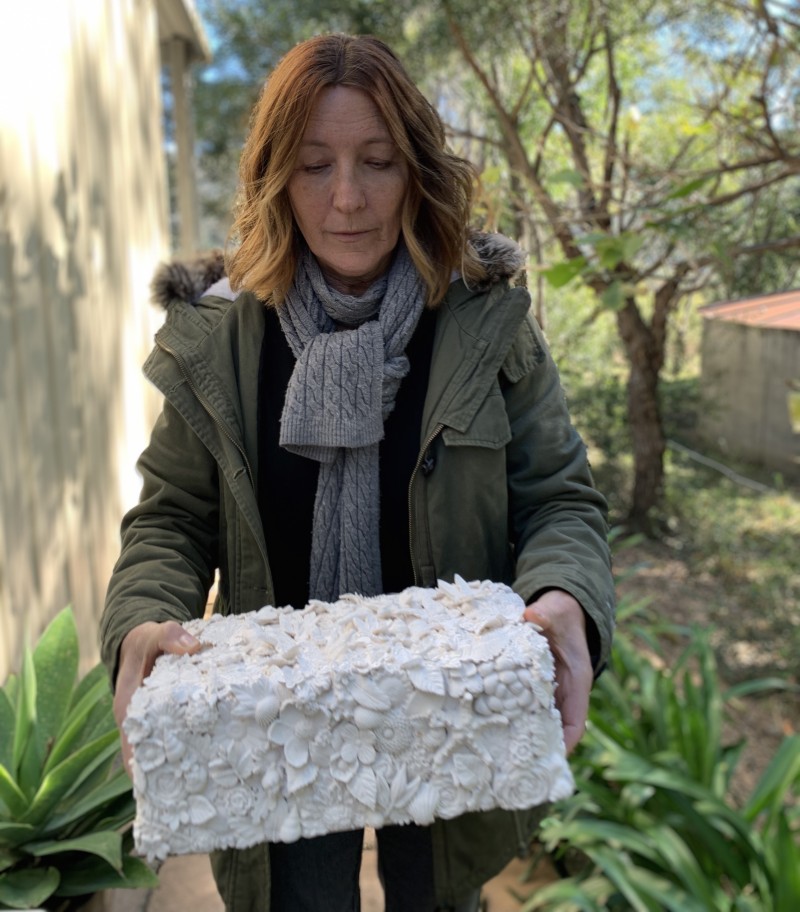
BUKOVINSKY: For the most part, I’m interested in exploring the ideas that percolate in my mind in the medium that seems most true to the thoughts. More often than not this is clay. Clay is such a tactile medium and I love how it responds to the movements of your hands. It reacts to every pinch, every pull, every press and therefore, I think it not only records what you are doing, but also how you are feeling. I am drawn to its malleability and tactility and even to its defiance, but I also feel comfortable expressing myself with many other drawing or painting mediums. More recently I’ve been experimenting with pairing some works in clay with some drawings and paintings and I’m enjoying where this is taking me. I think finishing my MFA, combined with Sydney’s recent lockdowns, has afforded me the time to be a little more experimental with the translation of ideas into different mediums.
"Clay is such a tactile medium and I love how it responds to the movements of your hands. It reacts to every pinch, every pull, every press and therefore, I think it not only records what you are doing, but also how you are feeling".
DE CARTERET: Can you talk me through the idea of ‘thinking through making’ and how this is an important framework in understanding your ceramic practice?
BUKOVINSKY: This is a proposition put forward by Timothy Ingold. Ingold suggests that creativity emerges from an improvisational process between makers, materials and other non-human things such as tools and the physical environment and he formulates this as ‘thinking through making’. Whilst my ceramic work typically comes from a place of preconception, Ingold’s understandings do reflect the framework surrounding most of my two dimensional processes. I rarely start a drawing or painting with the end product in mind. I prefer an improvisational process with the materials (eg. paints, pastels, bitumen), the tools (eg. brushes, rags, sticks) and I fuse these with my thoughts, emotions and sensory awareness within the physical spaces of working (eg. studio or bush). This interconnected network of relations reflects Ingold’s premise of creativity and artefact production and also describes my approach to most of the two dimensional work I create.
DE CARTERET: Your work is very conscious of the environment, what personal experiences have been significant to your relationship with the natural world?
BUKOVINSKY: I grew up on what was then the fringe of Sydney and the neighbouring bushland was my much cherished playground. Nearly every weekend I would head to the bush on my bike with many of the local children. We would spend time looking for frogs, insects and other creatures, collecting seedpods and exploring the trails and creeks. I fondly remember these experiences and believe they have contributed to my reverence for the natural world. I’m lucky to still live very close to native bushland however, due to Sydney’s expansion over the years, my current home is now many kilometres from my childhood home. One thing that remains the same though is my connection to the bush and the inspiration it provides, both artistically and soulfully.
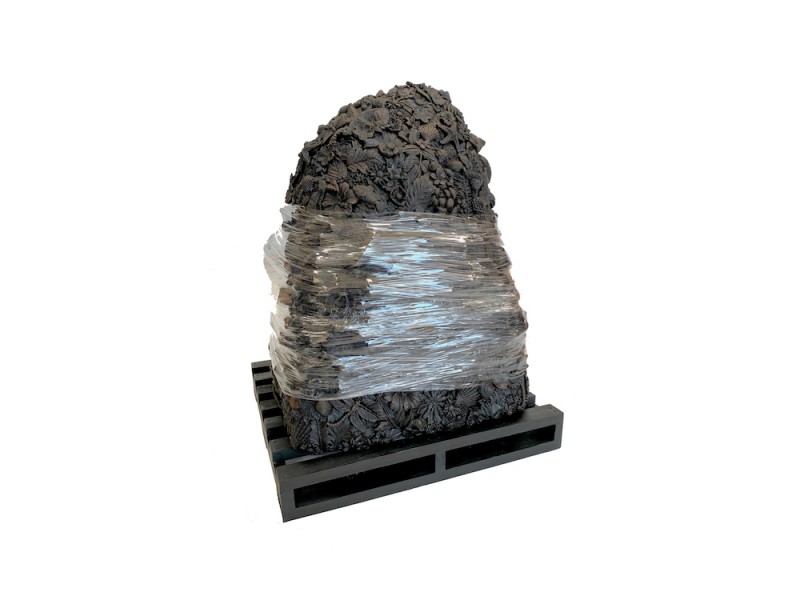 DE CARTERET: Some of your recent works from the ‘Protection’ series have been selected for art prizes including the Northern Beaches Art and Design Prize and one of them won the Mixed Media Prize in the Waverley Art Prize. Can you talk me through their concept and meaning?
DE CARTERET: Some of your recent works from the ‘Protection’ series have been selected for art prizes including the Northern Beaches Art and Design Prize and one of them won the Mixed Media Prize in the Waverley Art Prize. Can you talk me through their concept and meaning?
BUKOVINSKY: I’m so grateful that several works from the ‘Protection’ series have been well received. The concept for this series originated from a situation where I questioned my use of protective plastic sheets. I think plastic is such a strong and durable material and I guess that’s why it has been so incredibly versatile in supporting the needs of our modern world. Sadly though, the vast majority of plastics are derived from materials that resist breakdown. So many plastics linger in the environment for an extremely long time severely compromising animal welfare and natural ecosystems. Like many consumers, I am fervently committed to limiting my consumption of single-use plastic however, this personal decree was recently challenged when the need arose to sand and stain some very dilapidated windows. In order to protect the surrounding surfaces, in a cost effective manner, I reluctantly agreed to use protective plastic sheets. Attempting to ameliorate my choice and deal with my strong feelings of guilt I decided to reduce the number of protective plastic sheets and re-use them over and over again until absolutely impracticable. The plastic packaging was repurposed into this artwork series that examines notions of protection. To be honest, the work is probably also about trying to make amends!
DE CARTERET: In your MFA you researched the work of Timothy Morton. Which ideas of his struck you and how do you translate them into your work?
BUKOVINSKY: It’s hard to distil this down to just a few points but essentially Morton argues that all living and non-living entities exist in a vast entangled ‘mesh’ and that nothing exists independently from this ecological entanglement. He determines that one of the distinctive features of the world are ‘hyperobjects’ or things that are massively distributed in time and space relative to humans such as global warming, black holes, radiation and I’d suspect even SARS-CoV-2. These ideas of entanglement and interconnectivity strike a philosophical chord with me but some of his propositions have challenged some of the modes of creative expression in my practice. Morton asserts that dispensing with the very idea of nature is the only way to override the devastating human consumption of nature. He warns that putting nature on a pedestal and admiring it from afar does for the environment what patriarchy does for woman, subjecting and destroying her. Morton’s proposition, by implication, cautions us to avoid presenting nature as ‘other’. This raises a creative challenge for my practice as I often present nature as ‘other’. I typically describe nature by making clay forms such as leaves, flowers and seedpods as they offer a recognisable symbol of the natural world. I do this with the understanding that creating forms which can be interpreted as ‘nature’ allows me to juxtapose these with other forms including those found in areas of high human activity such as industrial sites. Morton’s ideas have provided much food-for-thought, but I have resolved that given our current environmental instabilities, creating works that present nature as ‘other’ speaks to the poignancy for understanding and communicating the impact of our relationship with it and therefore, engaging with identifiable visual conceptions of nature accommodates this priority.
DE CARTERET: Your practice metaphorically reflects upon the Cartesian dualism of mind/body and man/nature. These dualisms are deeply rooted in Western, colonial cultures and philosophies. Do you think this shapes a particular way of being with the environment?
BUKOVINSKY: Given the magnitude of physical evidence of anthropocentric impact on our planet, I think it is fair to assume that dualistic frameworks are still shaping our way of being with the environment, particularly in Western colonial cultures – a legacy from the French father of modern philosophy, Descartes. As such, I believe artwork that metaphorically reflects upon dualisms has the potential to create a level of relatability that may contribute to the discourse surrounding current human/nature relationships and these discussions may address the challenges threatening the vitality of our planet.
"These ideas of interconnectedness really interest me because I firmly believe that they can steer us on a path of healing many environmental ills that currently plague our planet. Our lives depend on it".
DE CARTERET: Can you talk about the ideas of interconnectedness that you’re interested in?
BUKOVINSKY: Many Indigenous cultures and some Eastern philosophies wholeheartedly embrace an idea of interconnectedness and this is exemplified in the genealogical bonds that intertwine humans with flora and fauna, mountains and river systems as well as a spiritual connection. These ideas of interconnectedness really interest me because I firmly believe that they can steer us on a path of healing many environmental ills that currently plague our planet. Our lives depend on it.
DE CARTERET: In an Australian settler-colonial context, do you think we could reimagine and reposition ‘interconnectedness’ in relation to the dominant Western philosophical dualisms?
BUKOVINSKY: For a very long time we have pursued goals with little or no awareness of the consequences of how everything is interconnected. This has created great imbalances and we are now in a highly vulnerable and fragile point in history. We really have to reimagine positioning interconnectedness because maintaining the status quo is not an option that will end well. Of course this will take liberal amounts of political commitment, substantial industry determination and a community that is galvanised around embracing an ecological consciousness and also holds governments and industry to account. That’s not too much to hope for is it?
DE CARTERET: You have used the wooden peg in your work multiple times, most recently in the work that you sent to me; ‘Still Life’ 2021. Can you talk about its symbolic value as an object in terms of marking out space and borders?
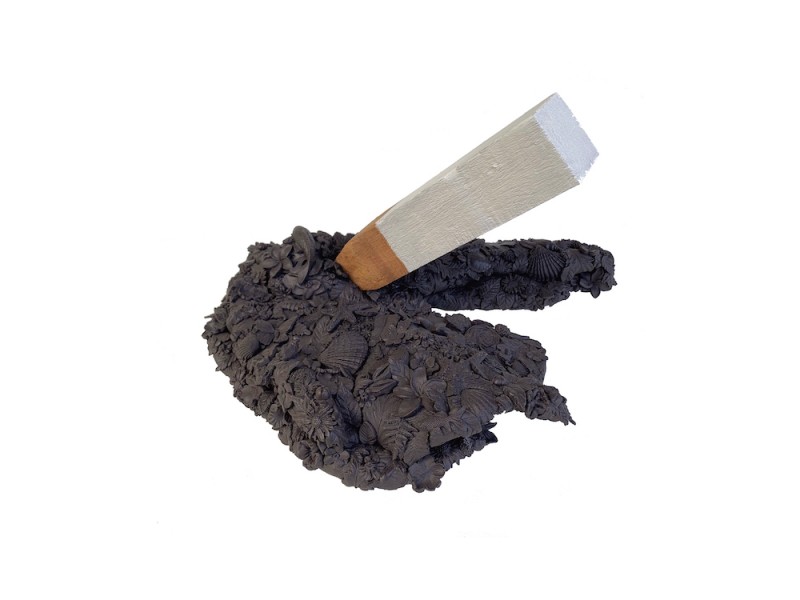 BUKOVINSKY: For a while now I’ve had quite a fascination with borders and boundary pegs. Boundary pegs are found on all new subdivisions and are strong markers of territory - they emphatically signify ownership. In adherence to the Surveyors and Mapping Infrastructure Act, it is unlawful for people to interfere with boundary pegs. I am interested in examining the value we assign to these simple milled timber spikes and how this reconciles with the values we place on other timbers, such as the trees found in our virgin bushland. Following significant land rezoning in the Sydney Basin bioregion I’ve been interested in our governments priority for urban development over ecological protection and works like ‘Still Life’ respond to this concern. By utilising the boundary peg I hope to tap into its symbolic value as a marker of territory and explore connotations of hierarchy and power in order to examine social, conservational and political priorities.
BUKOVINSKY: For a while now I’ve had quite a fascination with borders and boundary pegs. Boundary pegs are found on all new subdivisions and are strong markers of territory - they emphatically signify ownership. In adherence to the Surveyors and Mapping Infrastructure Act, it is unlawful for people to interfere with boundary pegs. I am interested in examining the value we assign to these simple milled timber spikes and how this reconciles with the values we place on other timbers, such as the trees found in our virgin bushland. Following significant land rezoning in the Sydney Basin bioregion I’ve been interested in our governments priority for urban development over ecological protection and works like ‘Still Life’ respond to this concern. By utilising the boundary peg I hope to tap into its symbolic value as a marker of territory and explore connotations of hierarchy and power in order to examine social, conservational and political priorities.
DE CARTERET: Can you talk about the concept of an ‘artefact’ and how they can generate different kinds of knowledge?
BUKOVINSKY: Essentially, every object made by a human being can be considered an artefact and they provide a means by which we give form to understanding ourselves and others throughout the course of history. Phillip Rawson, in his essay The Existential Base, asserts that artefacts become the ‘inner realities of the maker’s identity’. For me, the notion that a artwork may be an important marker of contemporary concerns, revealing as Rawson suggests, the inner realities of what it is to be human, is significant for its capacity to contribute to humanity’s ongoing cultural and social knowledge.
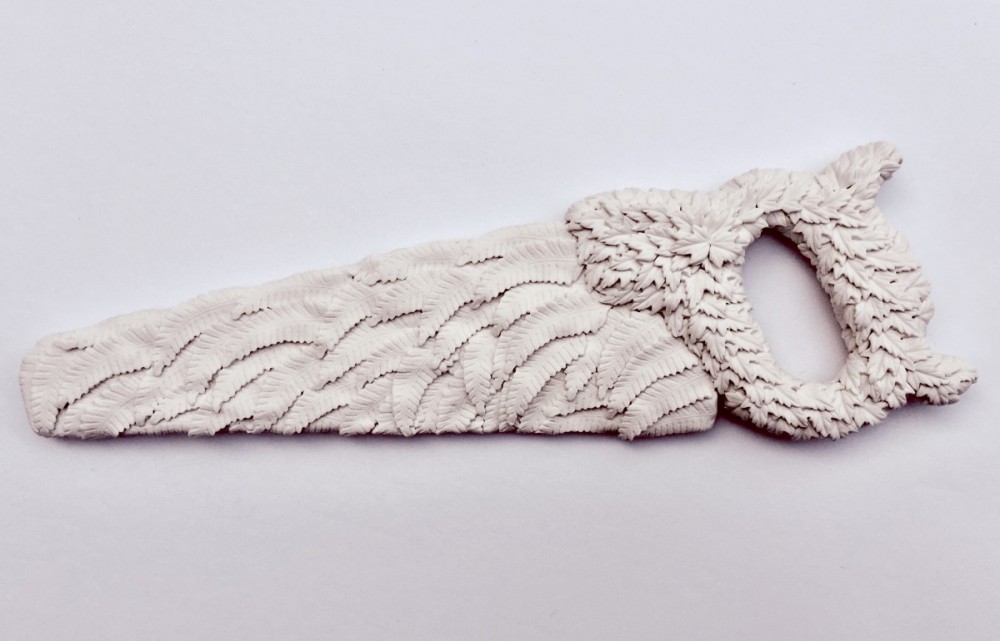
DE CARTERET: You’ve used the paraphernalia or equipment of built environments, industrial and construction sites. For example; hammers, safety gear, tools, pegs, building materials etc. What is the metaphoric value of these construction objects in relation to notions of ecological consciousness for you?
By pairing disparate forms I am also amplifying visual tensions that may encourage viewer interest. Viewer engagement has the capacity to tap into thoughts and emotions that may generate enquiry and possibly inspire conversation.

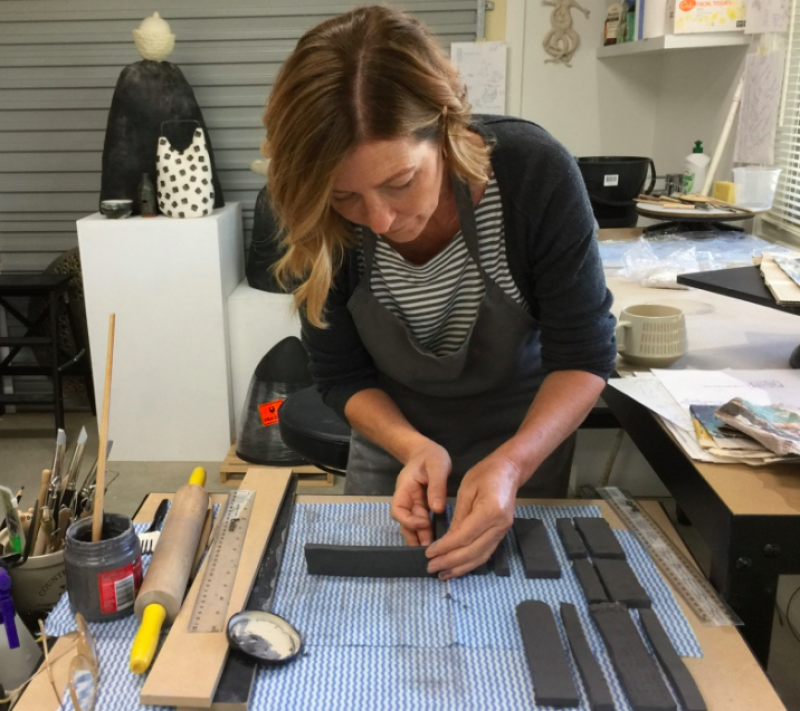 DE CARTERET: Has your artistic practice shaped you philosophically? Where do you think it is taking you? Where do you want it to take you?
DE CARTERET: Has your artistic practice shaped you philosophically? Where do you think it is taking you? Where do you want it to take you?